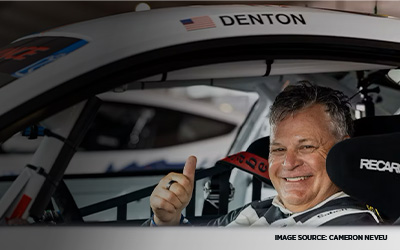EPIC Senior Vice President Mary Grandy Featured in Associated General Contractors of California Constructor Magazine
As seen in Constructor Magazine | By Mary Grandy
When a new year begins, we tend to have a renewed hope for what the coming year may hold. That rings truer than ever for 2021, when everyone is anxious to put 2020 as far behind in the rearview as possible. Unfortunately, just like that cheap champagne from New Year’s Eve, 2021 is likely to have some lingering hangover effects that business owners need to brace themselves for.
Even before the world was left reeling by the pandemic, the insurance markets had already begun a shift towards the hardest market that many have seen in a very long time. According to The Council for Insurance Agents and Brokers (CIAB), results for 2020 show rates continue to rise, with an 11.7% average hike across all policy lines in the 3rd quarter. While all lines reported increases, Excess and Umbrella coverage posted the largest increase at 22.9%, coupled with a 20% increase in the 2nd quarter, which followed a 17.3% increase in the 1st quarter.
Although Q4 results were not yet available as of this article, the trend has continued, and the annualized average excess and umbrella increases will be well over 60% for 2020. Even with this significant inflation, loss trends continue to outpace the rate increases that carriers are implementing. This does not bode well for 2021 rates.
‘Social Inflation’ Drives Loss Trends
A primary driver of these loss trends is not only the significant increase in the frequency of auto claims, but also the growing number of “nuclear” verdicts that have led to social inflation. The term “social inflation” refers to rising insurance losses as a result of higher jury verdicts, more liberal workers’ compensation claims, legislated compensation increases and new tort and negligence interpretations. Insurers find themselves in more lawsuits where they are being hit with larger jury verdicts than ever before.
Numerous other unforeseen climate and socioeconomic events such as #MeToo, the California wildfires, and the Opioid Epidemic have further ravaged insurers, as well. There is an overall mistrust of big corporations, and attorneys that fuels a mentality akin to winning the lottery. Social media fans the flames, and every incident is now captured live on cell phone video. We live in a world where determining the true fact in the news we read has become a part-time job. Investor financing for lawsuits is also big business, supporting all aforementioned areas.
How does all this translate towards our friends in the construction industry? While no class of business has been immune to the increases, contractors with higher exposure scopes of work and a heavy fleet of vehicles have been feeling a significant amount of pain for the better part of a year – and they can expect that to continue for the foreseeable future.
Carriers Reducing Capacity and Risks
A “soft” market cycle for over 15 years has left many accounts actuarily underpriced for the policy coverage limits carriers were offering. To correct this variance, carriers are now significantly reducing their capacity and risks, with little adjustment to the price.
If a carrier wrote a $25M Excess Liability limit policy, they are now offering a limit of $5M to $10M maximum limit, and often for a very similar price for which they offered the original $25M limit. The contractor then must secure another policy in their excess tower, for additional premium.
It would not be uncommon for a contractor who previously carried $100M in excess liability limits tower with four carriers to now find themselves renewing with as many as eight different carriers, while facing double digit percentage increases in premiums to get there.
How can contractors mitigate this increase? Many are looking at alternative risk placements, perhaps increasing the primary layer of insurance before the excess carrier must engage (from $1M to $2M), and are investigating higher deductibles or self-insured limits. All should consider revamping and updating their driver safety program and closely monitoring claim activity. New technologies such as wearables, drive cams, and teaching good old defensive driving skills can all have a positive effect on the losses sustained over the long term.
EPIC National Construction Practice
Our dedicated construction team operates as your business partner and trusted advisor – not just offering transaction-based, reactionary services, but providing forward-thinking consulting and advocacy. Our teams have a focus in the construction space specifically for contractors, real estate, rental equipment operations, as well as energy.
Related Content
Products
Risk Management
Our experienced teams take an enterprise-wide approach, consulting closely with you to identify, analyze and ...
Industries
Construction
A professional team of nationwide specialists dedicated to delivering impactful risk management and insurance ...
Construction
National Energy Construction
Construction / National Energy Construction Based in Birmingham, Alabama, EPIC’s National Energy ...



